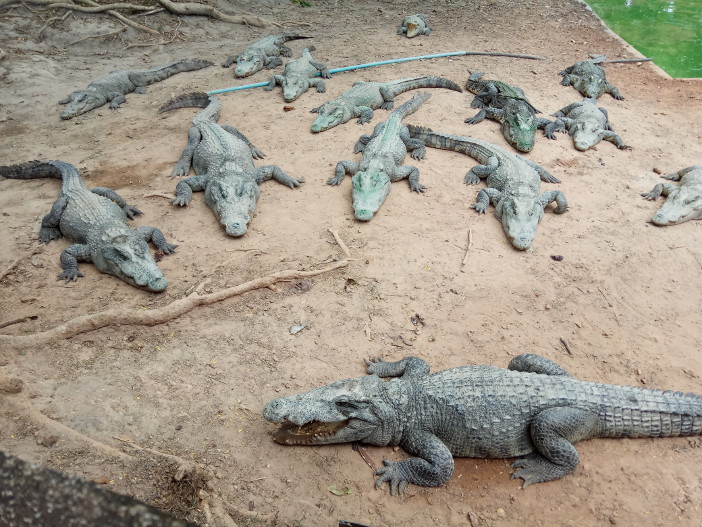As a parent of animal-loving kids, I’ve written before about feeling conflicted when it comes to zoos. My children love to see and learn about wildlife; but I have serious concerns about the standards of animal welfare in many zoos, particularly (it must be said) in Asia.
So it’s a pleasure to be able to report on a zoo with ethics and care for animals at its heart. Having exhausted the pleasures of Vientiane inside a day or so, I stumbled across the Laos Wildlife Rescue Centre (LWRC) via an online search. Getting there proved to be a little trickier though. It didn’t seem to be on any of the tour itineraries, and in the end we had to hire a minibus and driver to take us there. At a cost of USD 120 this was extravagant for a family of four, but we justified it to ourselves on the basis that everything else in Laos was so cheap.
However I was glad that we made the effort, though I was concerned at first. The people behind the Wildlife Rescue Centre are working in partnership with the Lao Zoo, and at the entrance it appeared to be a rather downbeat and old-fashioned place, with deer and turtles as the first animals you encounter.
However it’s a huge site, and the deeper you explore the more you discover the scope and potential of the project. The owners are working to improve conditions for all the animals, and training the staff to provide better care. And behind the older buildings are larger enclosures where the rescued animals are looked after.

The bears at the LWRC are contented and curious
Many of these are bears. Tragically the Asian black bear is hunted and bred for use in Traditional Chinese Medicine, often being caged with its bile tapped via a tube. The Wildlife Centre has a policy of “rescue, rehabilitate, and release”, and most of the animals we saw – contented in big, varied spaces, and showing no signs of distress – are destined to return to the wild.
Sadly some of the zoo’s inhabitants are too damaged by their treatment at the hands of human beings that they can never be released. We could only imagine what had happened to the mandrill which paced in tiny circles in its cage, and my children voiced their disgust aloud at the visitors who were teasing it to get it to “perform” for them.
Not all the primates were distressed. The elegant lar gibbons showed off for us their skill at swinging from branch to branch, in a natural expression of their territorial rights. The volunteer that we met talked about them by name, enthusiastically describing their different personalities.

A lar gibbon poses, elegant as a dancer
My boys were also delighted by the binturongs. This beautiful animal is known as a “bearcat”, though it is neither bear nor cat, but actually a species of civet. Among other highlights for us were the impossibly cute lorises, and a large collection of crocodiles.

Crocodiles laze in the sun
The zoo is still a work in progress, but an impressive amount has been achieved in the short time since the LWRC was established. If you are visiting Vientiane or Vang Vieng, then I would urge you to get to the Centre (it’s roughly halfway in between), and support the important work they do in preserving endangered species and rescuing vulnerable animals from cruel captivity.
To find out more about how you can support the Laos Wildlife Rescue Centre, visit their website: www.laoswildliferescuecentre.com
Photos: Andrew Killeen




